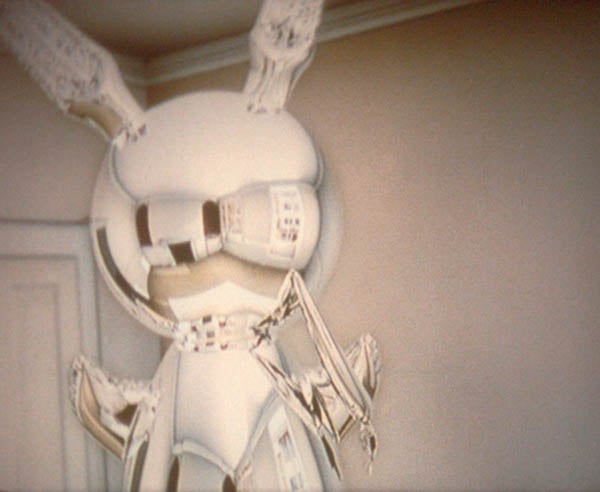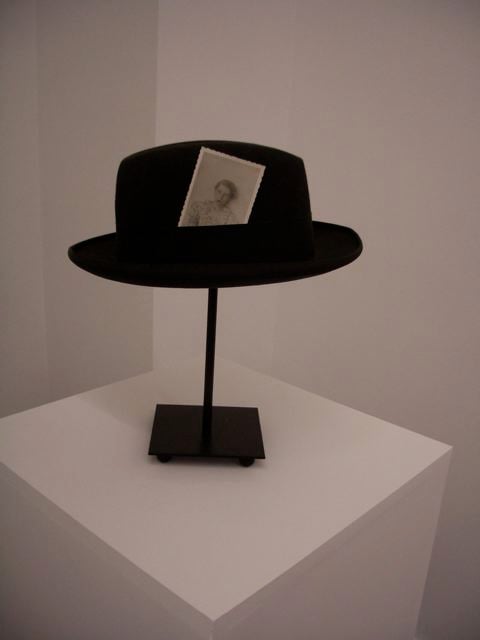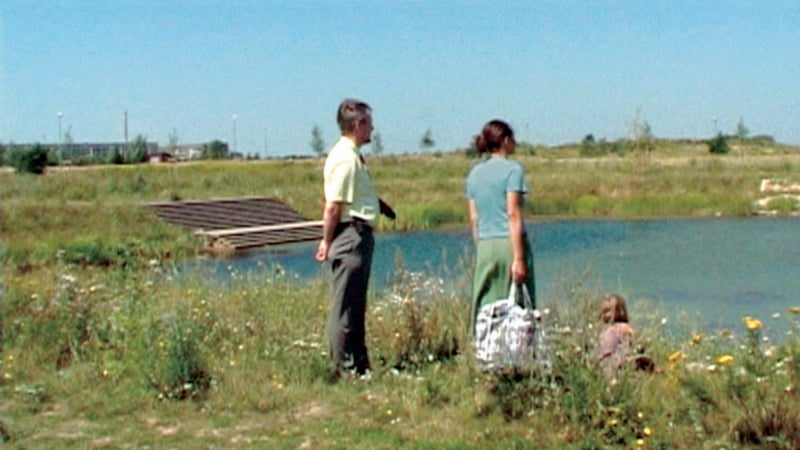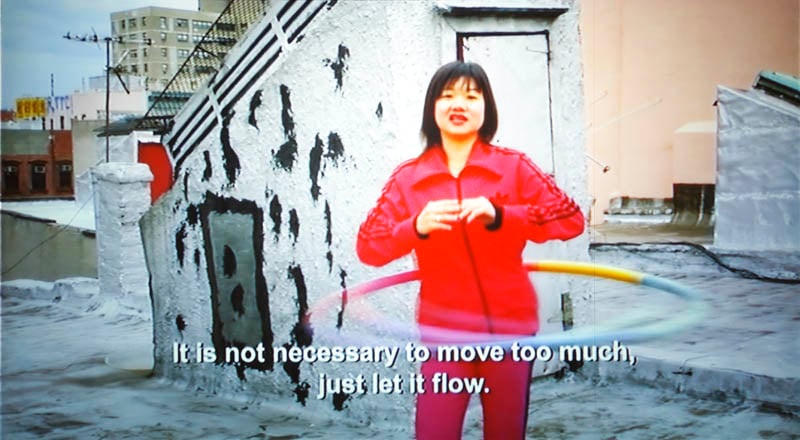Paint, Unpaint
2014 - Film & Video (Film & Video)
1:34 minutes
Kota Ezawa
Paint and Unpaint is an animation by Kota Ezawa based on a scene from a popular 1951 film by Hans Namuth featuring Jackson Pollock. At first glance, due to the oversimplified silhouettes Ezawa employs, the connection between his animation and Namuth’s film may not be obvious. However, when seen side by side, Ezawa’s piece is a faithful reproduction of the scene—up until a point in which his sequence begins playing in reverse, effectively unpainting every brushstroke. The scene in Namuth’s film is remembered by many for its experimental nature: with the camera pointed towards the sky, Pollock paints onto a sheet of glass as Namuth films the process from the opposite side. Through this unique viewpoint, what results is a filmic device that effectively conveyed Pollock’s process of “action painting” to wide audiences. As Ezawa gives this iconic scene a new life as a digital animation, he adds an additional layer of separation from the original source of focus, which is Pollock’s paint. Ezawa’s choice to reference Namuth relates to his ongoing investigation of the symbolic power of images in the mainstream. Allegedly, Namuth was more interested in the image of Pollock than his actual work, and as the author of several photographs and the 1951 film, his own role as image-maker was essential in conveying Pollock’s process to audiences and contributing to his fame. As much as the original film is about Pollock, Ezawa’s retake is constructed around Namuth’s representation of the iconic artist, and the degree to which it was responsible for constructing his identity in our social imaginary.
Kota Ezawa borrows images from the news, art history, and pop culture and turns them into cartoon-like stories. He produces flat and two-dimensional imagery via his light-boxes, works on paper, and animations. These works are often inspired by important moments in history, such as the assassinations of John F. Kennedy and Abraham Lincoln, the O.J. Simpson trial, and media coverage of former National Football League (NFL) player Colin Kaepernick kneeling during the national anthem as a symbol of protest. Ezawa’s animations, which he describes as “moving paintings,” make use of a labor-intensive technique that requires the artist to recreate each frame with close attention, producing hundreds of illustrations via digital drawing and animation software. He is best known for a signature style that embraces vibrant colors and simple forms, stripping detail from images to leave only essential attributes and environments. This reductive technique does not diminish the power of the image, as it turns to the familiar historical or cultural context to fill any gaps left by the artist’s erasures. However, the gesture also invites viewers to think about how these erasures might destabilize the reliability of public memories, highlighting the faulty process of collective remembering and what it tends to overlook.
Colors:
Related works featuring themes of: » Animation, » Appropriation Art, » Art and Technology, » Collage, » German

© » KADIST
Wong Wai Yin
2021Drawn from the widely circulated images of protests around the world in support of women rights and racial equality, the phrase I can’t believe we are still protesting is both the title of Wong Wai Yin’s photographic series and a reference to similar messages seen on protest signages...

© » KADIST
Clemens von Wedemeyer
2003Silberhöhe , directed at Halle, located in the former GDR (German Democratic Republic), is the name of a neighborhood on the outskirts of the city, which was built in the 70’s and could accommodate more 40,000 people...

© » KADIST
Chen Shaoxiong
2007After engaging primarily with video and photography for more than a decade, Chen turned to painting to explore the issue of urban change and memories—both personal and collective...

© » KADIST
Jennifer Locke
2005Choke documents the artist filming a wrestler “choking out” his teammate until he is unconscious...

© » KADIST
Charles Gaines
1980To make his series Shadows (1980), Gaines subjected 20 potted plants to a uniform procedure...

© » KADIST
Petra Cortright
2011In her 2011 webcam video, Sickhands , Cortright poses before her in-computer camera, as her hands, hair, and body begin waving and rippling vertically across the screen, distorted by software effects...

© » KADIST
Wallace Berman
1969While Untitled (Shuffle) presents the same formal characteristics as the rest of Berman’s verifax collages, this constellation of specific images inside the radio’s frames—the Star of David, Hebrew characters, biblical animals—have Jewish symbolism and attest to the artist’s lasting obsession with the kabala...

© » KADIST
Mark Leckey
2004In Made In Heaven , we are face to face with a sculptural apparition, a divine visitation in the artist’s studio...

© » KADIST
Hans-Peter Feldmann
The types of objects Feldmann is interested in collecting into serial photographic grids or artist’s books are often also found in three dimensional installations...

© » KADIST
Clemens von Wedemeyer
2004Die Siedlung is a filmic documentary about the recent shift in housing developments in Leipzig-Grünau in former East Germany and its consequences on some inhabitants...

© » KADIST
John Baldessari
1997In One Must , an image of a pair of scissors, accompanied by the words of work’s title, poses an ominous question about the relationship between the image and the text...

© » KADIST
Thomas Kilpper
2009These two images come from the series called “State of Control” which Kilpper made in the building formerly occupied by the Stasi in Berlin...

© » KADIST
Wong Wai Yin
2021Drawn from the widely circulated images of protests around the world in support of women rights and racial equality, the phrase I can’t believe we are still protesting is both the title of Wong Wai Yin’s photographic series and a reference to similar messages seen on protest signages...

© » KADIST
Christian Jankowski
2008In New York City’s Chinatown, subject Suat Ling Chua’s morning exercise is to practice the hula hoop...

© » KADIST
Wolfgang Tillmans
2017Wolfgang Tillmans initiated the ongoing series Faltenwurf in 1989, representing compositions of unused clothing, with special attention paid to the ways in which they drape and fold...





